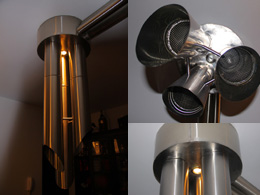ARCHITECTURAL PROJECTS
INTERIOR
The design of a utilitarian object, necessary for the functionning of a house, poses a particular challenge to the designer.
This specific extractor hood was studied by the designer and was then constructed not only after examining new morphological conditions - those of the object -, but by actually conducting a functional and effectiveness analysis.
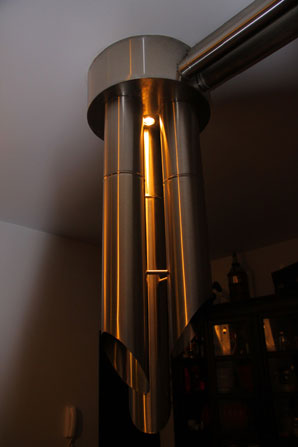
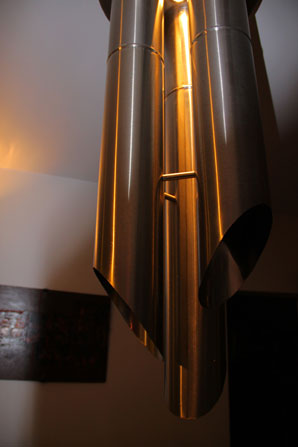
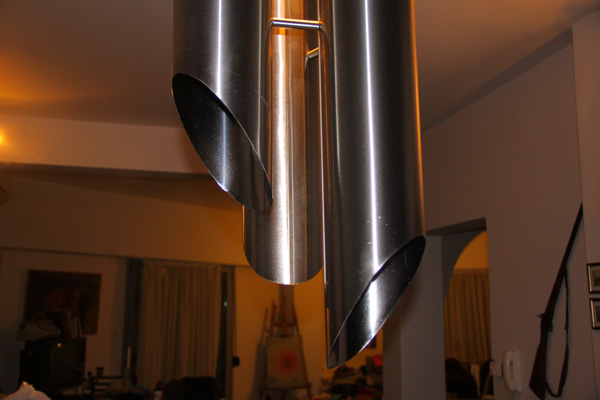
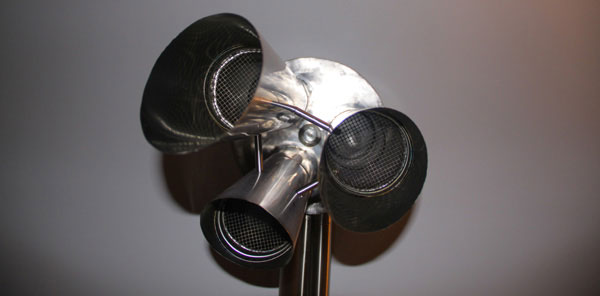
Three tubes are placed vertically above each hearth separately - except for the small one ("that of the coffee") - thus directly absorbing odors and fumes. The imaginary diameter formed by all three tubes is sufficient to allow the absorption of even the slight outflows from the small hearth, a result obtained also through experimentation. The tubes end up in a common base, where then the effluents are "mixed" and then released with the assistance of a motor.
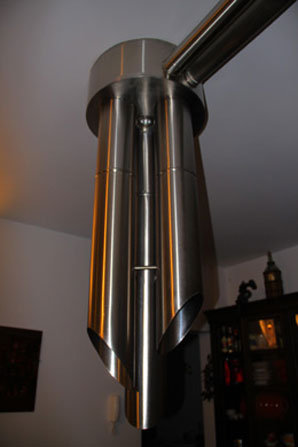
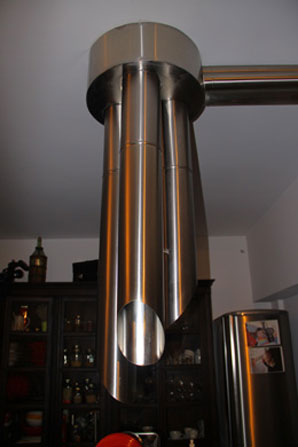
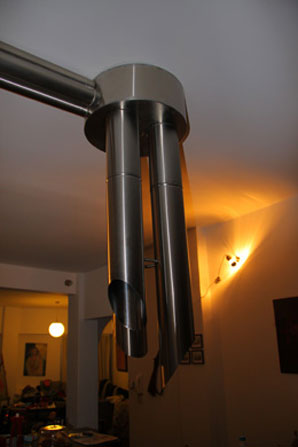
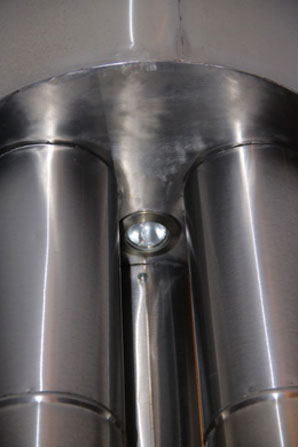
The extractor hood has been designed after having taken into account two basic principles concerning the release and the absorption of the effluents while retaining the ability to install the motor both externally and internally (at its bottom).
The placing of the motor externally (on the roof or adjacent to it) is the ideal solution given that these particular motors are much cheaper than those that could be placed internally and at the bottom of the extractor hood whereas they also have a stronger horsepower and efficiency. In addition to that, by placing the motor externally the reduction of the internal noise pollution is accelerated, as long as the necessary rules are followed concerning both its position (as to adjacent buildings) and right casing - box where the motor is kept - and also waterproofed.(1)
1. Vertical release
Technically this is the ideal mounting solution. A necessary requirement is considered to be the prediction of a hole (2) in the ceiling plate during the construction.
2. Horizontal release
This solution is recommended for existing structures, it functions properly avoiding arbitrary wounds in the ceiling plate. Furthermore, the horizontal duct system (3), is either evident (as presented in the example) or internal in the case of a false ceiling.
Inner motor (at the bottom)
The installation of an inner motor at the base of the extractor hood requires less work (compact system) while avoiding the "visual pollution" caused by the outer box. Therefore, there has been no research or experimentation effected by the designer.
Carbon filters
Finally, in regard to the absorption function with carbon filters, this could theoretically be the most important and easier technical solution for the release of the effluents, however the ineffectiveness and the need for regular replacement of the filters brings many questions. This solution constitutes the friendlier to the environment and hopefully the technology in the future will be able to keep up. This particular solution could be recommended to country houses for more "frugal people"...
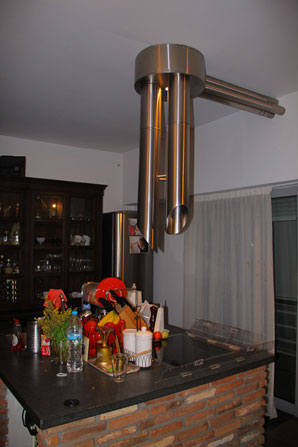
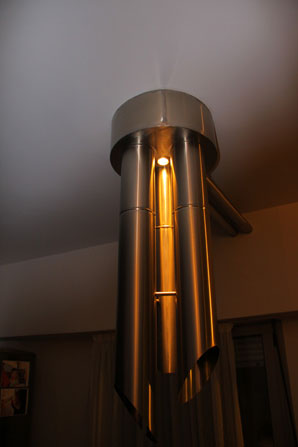
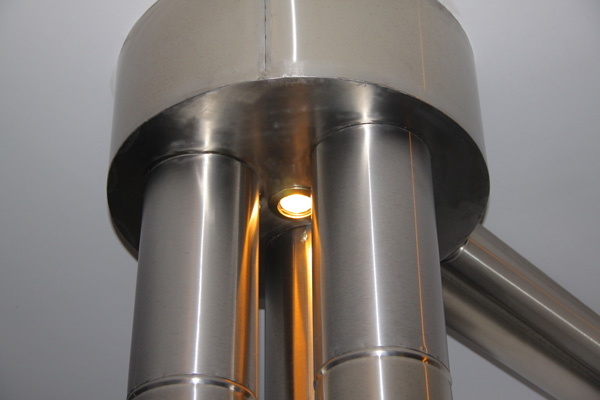

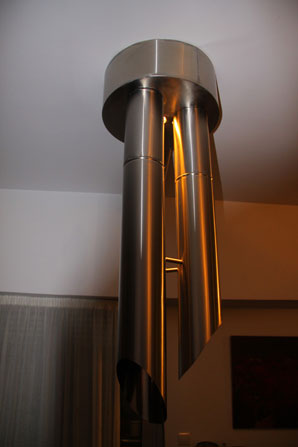
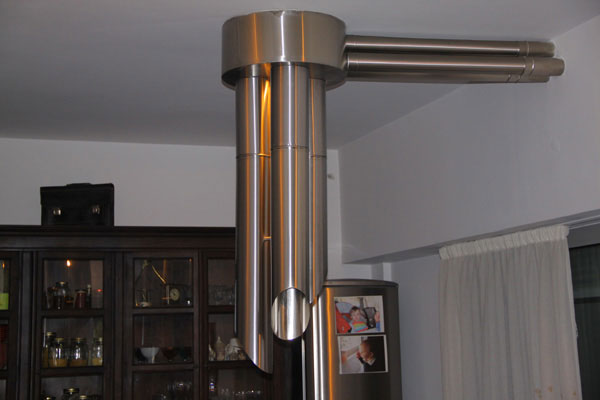
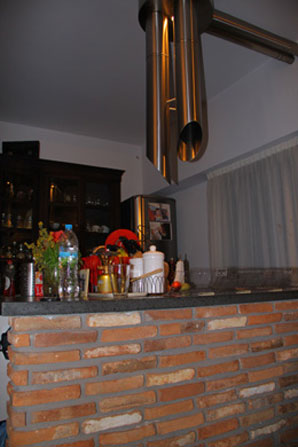
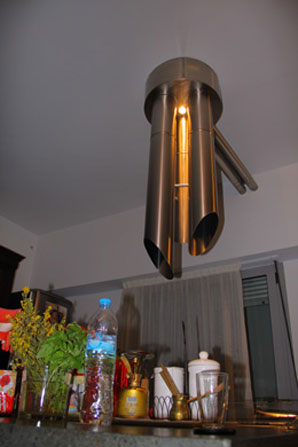
Design - Construction: Vassilis Mistriotis
Notes
1. The box where the motor is kept should be sealed properly and also be provided with proper ventilation (small side holes are enough). It is also considered that the placement of a soundproofing filter is necessary.
2. There should be a precise calculation of the hole (which is to receive the range hood's frame) during construction. Experience: The undersigned, in many constructions failed to properly utilize the holes-openings in the ceiling plate due to divergences.
3. In the horizontal release (lateral pipes) the height of the wall joists should be taken into account. In this particular construction were used, inside the lateral bricklaying, small flexible hoists to ensure that (* the lateral pipes) pass under the joist and exit to the motor (near the box containig the rolls). In general, the construction of a false ceiling is recommended.
